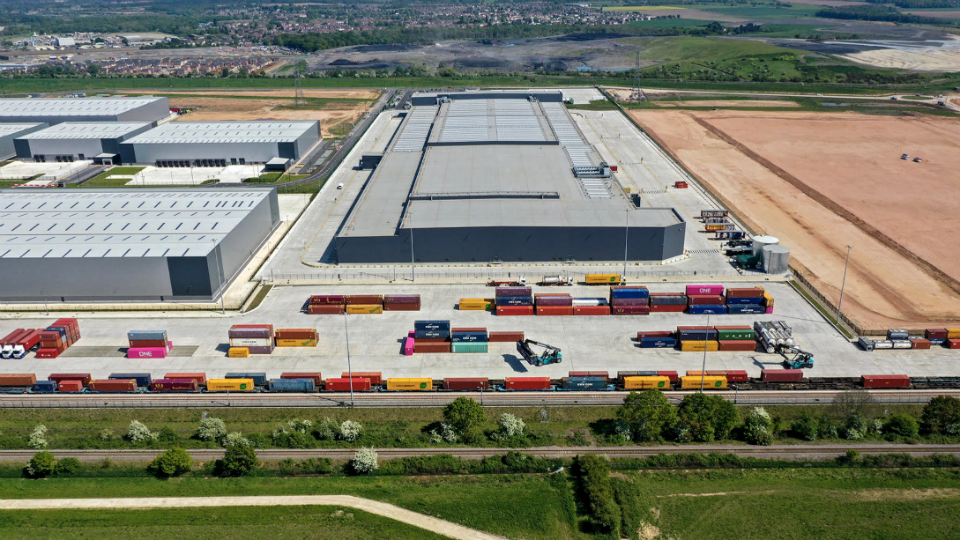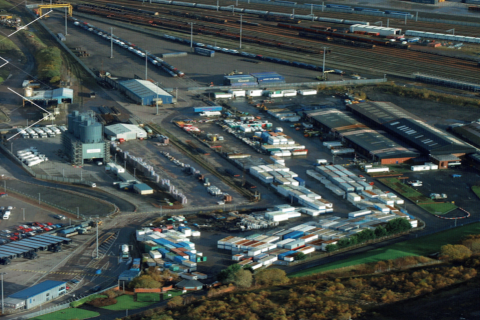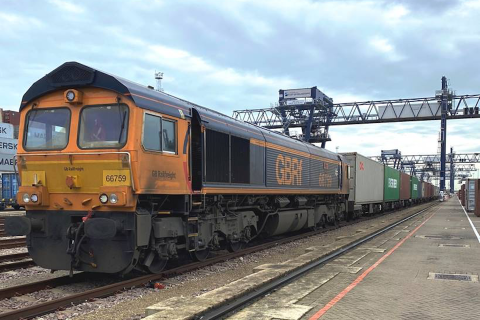iPort Rail storms ahead despite flooding or Brexit

It was just another day at the office for Managing Director Steve Freeman. While the rest of South Yorkshire mopped up after a night of flooding, iPort Rail flowed on regardless, with dozens of multi-modal loads handled before mid-morning skies had cleared. 8 November’s news headlines were filled with ‘biblical’ weather woes, but at Doncaster’s inland rail port, it was business as usual.
In railway heritage terms, the town needs no introduction, and the birthplace of Flying Scotsman is still innovating. Having just celebrated the first anniversary of its royal opening, iPort Rail represents the strategic rail freight interchange at the heart of a vast 320-hectare site, developed by the pan-European logistics specialist Verdion. On-site tenants and businesses across the region are already making use of five trains dispatched daily, the most recent added in the last month, connecting with the English east coast container port of Felixstowe.
Future Proof Facilities
While the present infrastructure can handle six trains daily, there is designed scope to double that capacity. Steve Freeman says the inland rail facility is there to answer latent demand for UK logistics flows. He says iPort Rail’s central location has wide appeal and it’s a modern and efficient facility with excellent multimodal links. “It makes perfect sense here, ideally located in range of most of the UK population, yet positioned away from the more congested South East corridors.”
There is good road access, but the gauge cleared rail paths, both north and south to the East Coast Main Line, give ready access to ports and distribution centres at all points of the compass. “Gauge clearance is critical for successful onward journeys and connections both across the UK and Europe”, says Freeman. “While Doncaster’s railway heritage is Victorian, we have made it work for twenty-first century business and the demands that customers place on their supply chains.”
Brexit Issues Put Aside
Freeman explained that whatever the position around Brexit, pressure on the UK road network and a well documented shortage of truck drivers was likely to promote further use of rail freight options. With an 800m length reception siding, capable of accommodating the Europe’s longest train lengths, plus 2 x 400m load/unload sidings, there is secure storage of up to 1,500 TEU.
Uncertainty over trade routes post Brexit is not an issue. “Whatever happens around Brexit, UK supply chains will need to operate differently”, says Freeman. “We have taken into account the changing nature of international trade and freight flows, and we are geographically well placed, but also technically ready to move with the times and handle different cargoes with varying customs requirements”, said Freeman. “iPort Rail is already built to SACTFF approved secure facility standards for international European movement. We are also at an advanced stage in our Authorised Economic Operator (AEO) status application, which will allow us to process simplified customs procedures on site. We have built in resilience and adaptability.”
Season of Good Cheer
With five services inaugurated in their first operational year, growth potential is critical to the terminal’s success. iPort Rail is about to celebrate its second Christmas in operation, and Steve Freeman says there are a few more presents around the tree. “This has been a year marked by strong and consistent growth, and we expect our great success story to continue in the new year. We are currently in talks with further operators and are likely to announce more new services before the year’s end.”
Britain’s notoriously stormy winter may have gotten off to a wet and windy start, but that hasn’t blown off course the ambitions of Steve Freeman for iPort Rail.

You just read one of our premium articles free of charge
Want full access? Take advantage of our exclusive offer




